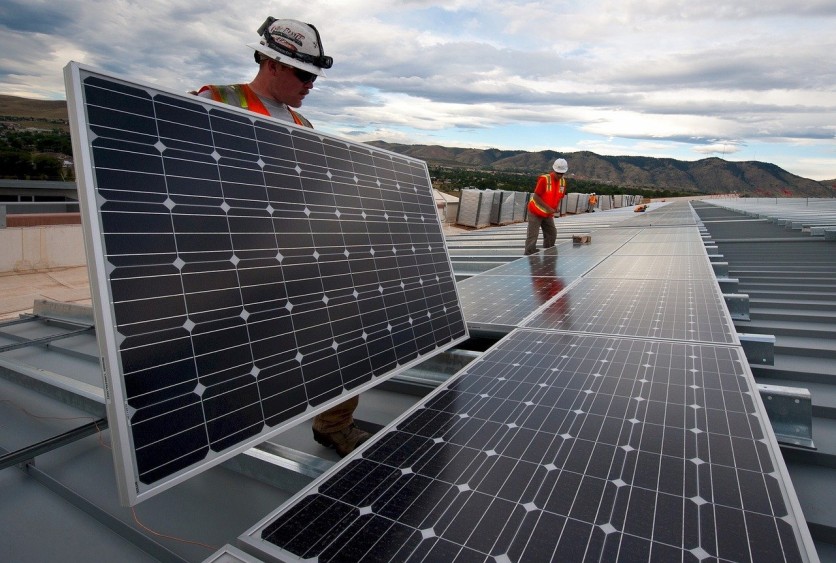
You might be surprised to learn just how many different sources of energy there are.
While there are new technologies being discovered all the time. At present there are only 10 that are powerful enough to provide energy for the modern world.
Each of these sources are primarily used to produce electricity, which is used for a variety of functions, whether that is driving a car or switching on a light.
Lets look at each of these different energy sources and how they work.
#1: Solar Energy
Solar energy is obtained by harvesting the energy made by the sun through the use of solar panels, this can then be turned into power we can use ourselves.
If enough solar panels are placed in the desert then enough power can be produced to charge small substations, while many modern homes use solar power to heat water, and to supplement other electricity sources.
The main issue with solar energy is that many parts of the globe do not receive enough sun light to generate much useable power.
#2: Wind Energy
You have probably noticed that there are lot more wind turbines around nowadays? This is because these large turbines can harness the power of wind to create energy.
When the wind hits the turbines they turn, and in doing so the power generated will help to produce electricity.
Wind turbines may seem like a good idea but they are not without risk to the public and to animals.
These turbines can create sub-sonic noise that have been linked to headaches, sleeplessness, dizziness and depression in humans, while the blades themselves can be a danger to birds as they travel up to 200mph.
#3: Geothermal Energy
This is the energy that is produced beneath the earth surface when the high temperatures create steam that helps to move turbines. It is these rotating turbines that power the generators.
Geothermal energy is not a new technology, and has been used for thousands of years as it was once used for bathing and for heating in ancient times.
While this type of energy can be used to power houses and can be used in industry there are only a few geographical locations where it is possible to use it.
One of the largest geothermal power plants is located in the USA, at The Geysers, a geothermal field in California.
#4: Hydrogen Energy
Hydrogen when separated from water and combined with oxygen atoms it can be used as fuel to generate electricity.
This type of power has been used in fuel cell buses for many years, and there is a growing number of cars using this form of power too.
Research has found this type of energy to be renewable and will not leave any toxic emissions.
#5: Tidal Energy
Tidal energy uses the power of incoming and outgoing tides to generate energy.
While this form of energy is renewable and can produce a large amount of energy, even with low tides, there is a lack of interest in this form of energy as it can only be used along coastlines and there is a high cost to implement it.
#6: Wave Energy
Unlike tidal energy, wave energy is produced from the waves produced in the oceans themselves not the tides.
Wave energy is renewable, but it has been shown to damage marine life and can be a source of both visual and noise pollution.
#7: Hydroelectric Energy
You may not already know this but many large cities and towns already rely on this source of energy.
If you see a large dam, then chances are that nearby there will be an electrical station somewhere.
Energy is created by the power of the water, which turns generators and produces electricity.
The issue with hydropower is that many of these dams are starting to age, and require major restoration work.
#8: Biomass Energy
This is the energy, or fuel, produced from organic materials (plants).
When the plants are burnt the water and carbon dioxide it has absorbed will be released back into the atmosphere.
The issue with this type of energy is that it produces a large amount of carbon dioxide, which can increase the greenhouse effect, leading to an increase in global warming.
#9: Nuclear Power
There are many who still believe that nuclear power is not safe, probably after hearing about the disasters in Chernobyl and Fukushima.
The fact remains that most countries have nuclear reactors, with teams of scientists working around the clock to ensure they run safely and efficiently.
#10: Fossil Fuel
Fossil fuel such as natural gas, coal and oil have been the primary source of energy for many years.
Oil for example, is still the most commonly used, as it can be converted into gasoline that many of our vehicles and machinery use.
The problem with fossil fuel is that to get it and convert it there will be heavy destruction and pollution to the environment.
Fossil fuels are also reaching a point where they are starting to run out, with some experts believing that the well will run empty within the next 100 years based on the current rate of consumption.
Which Energy Source Is Best?
We cannot tell you which energy source is best, they all have their pros and cons.
There are plenty of so-called experts who will advocate this energy source over another, but what needs to occur is a change to how we consume energy.
Fossil fuels supplies are running low and the pollution it causes should lead us into greener forms of energy. Only time will tell if this occurs or not.
Are Lithium Batteries A Good Energy Source?
Lithium batteries, or lithium-metal batteries as they are sometimes referred, are primary batteries made using metallic lithium as an anode.
These batteries like Samsung 25r are widely used, and are used to power portable consumer electronic devices, as well as electric vehicles ranging from small radio controlled toys to full sized vehicles.




